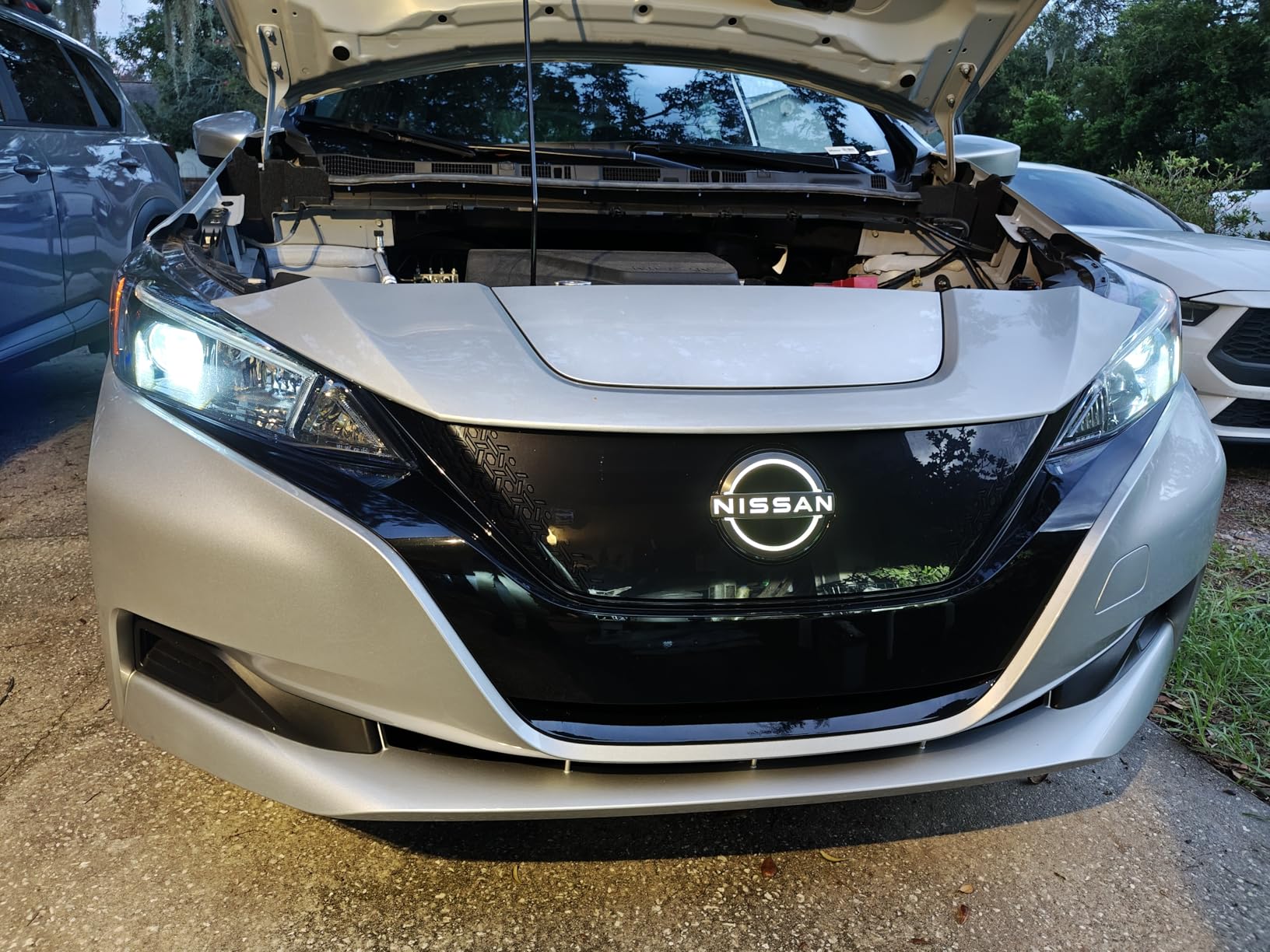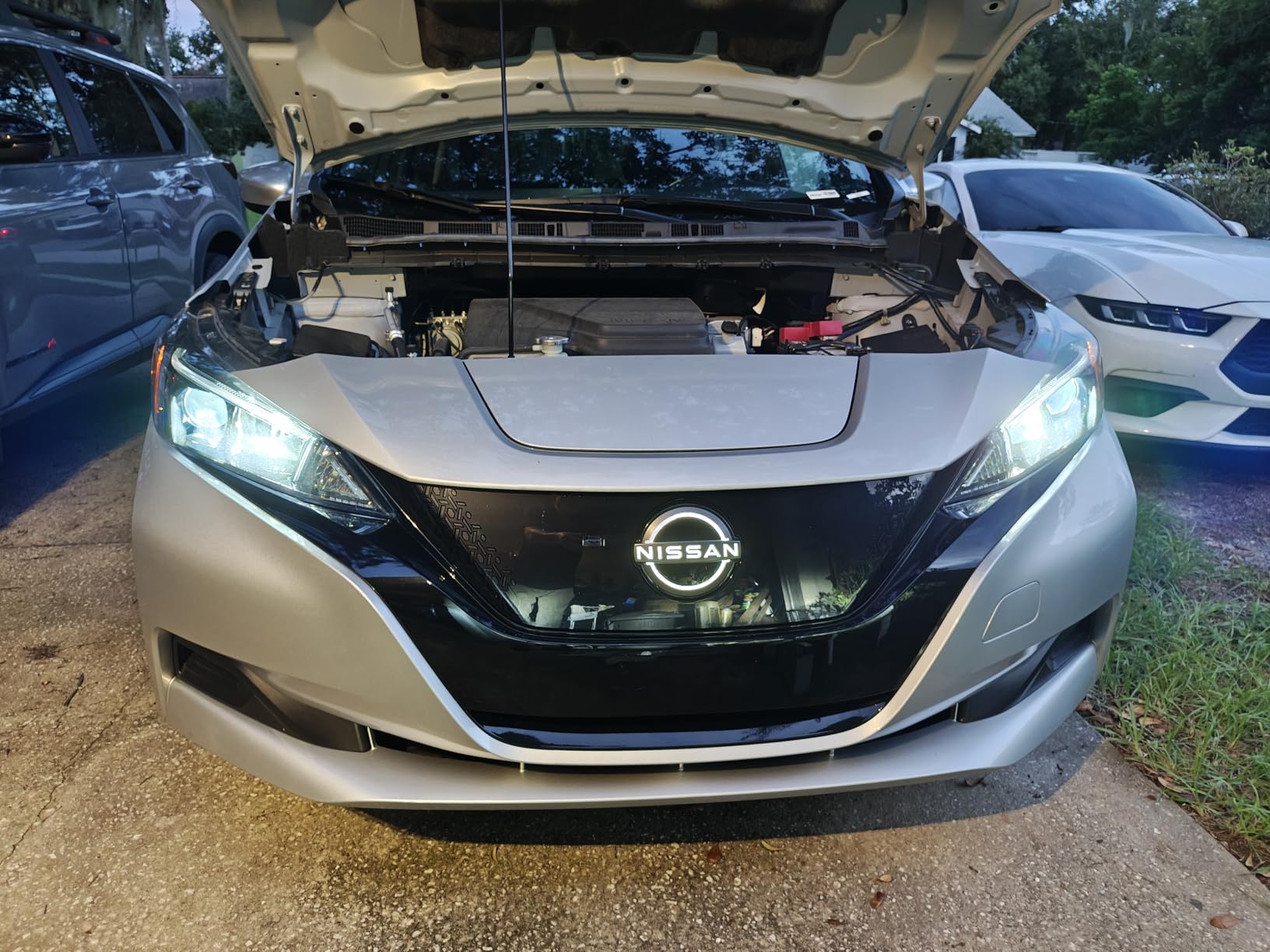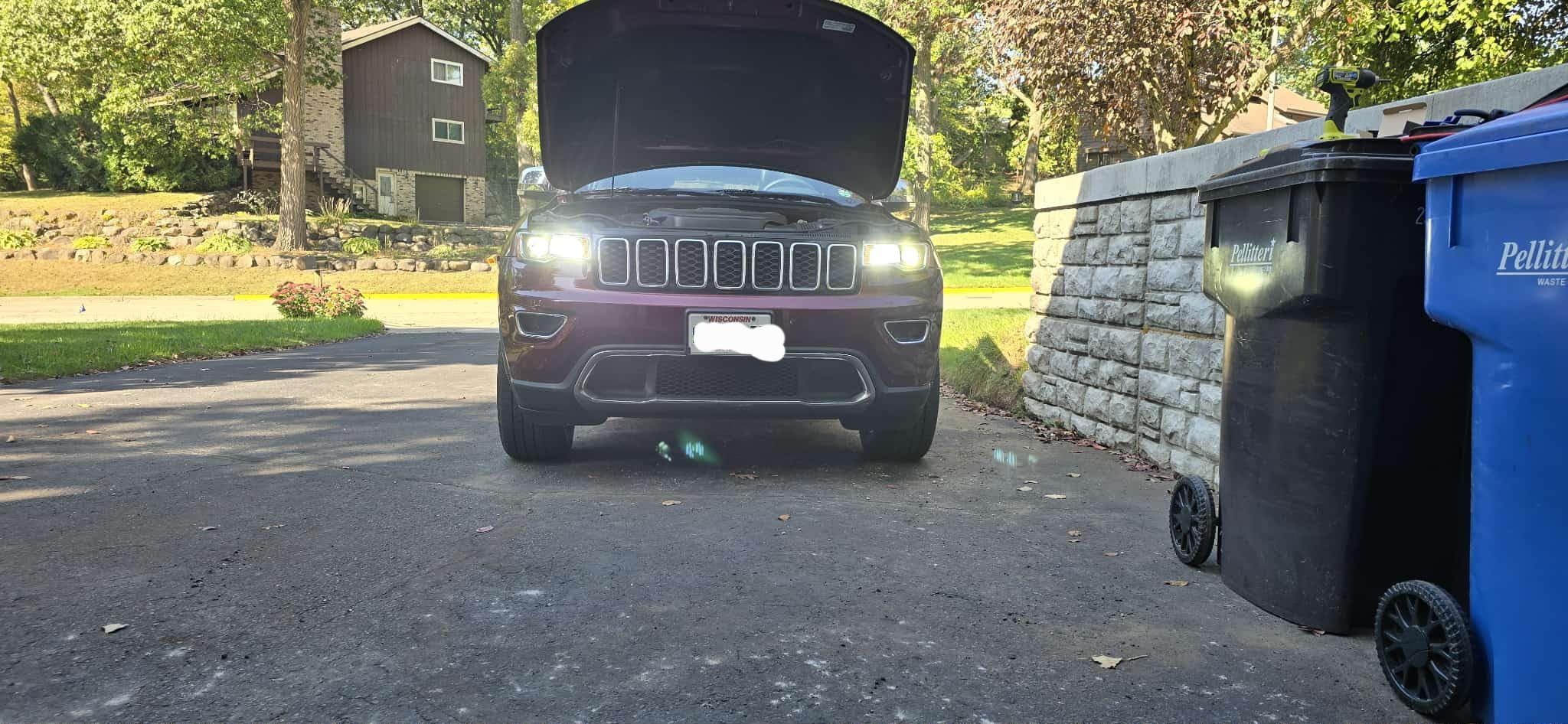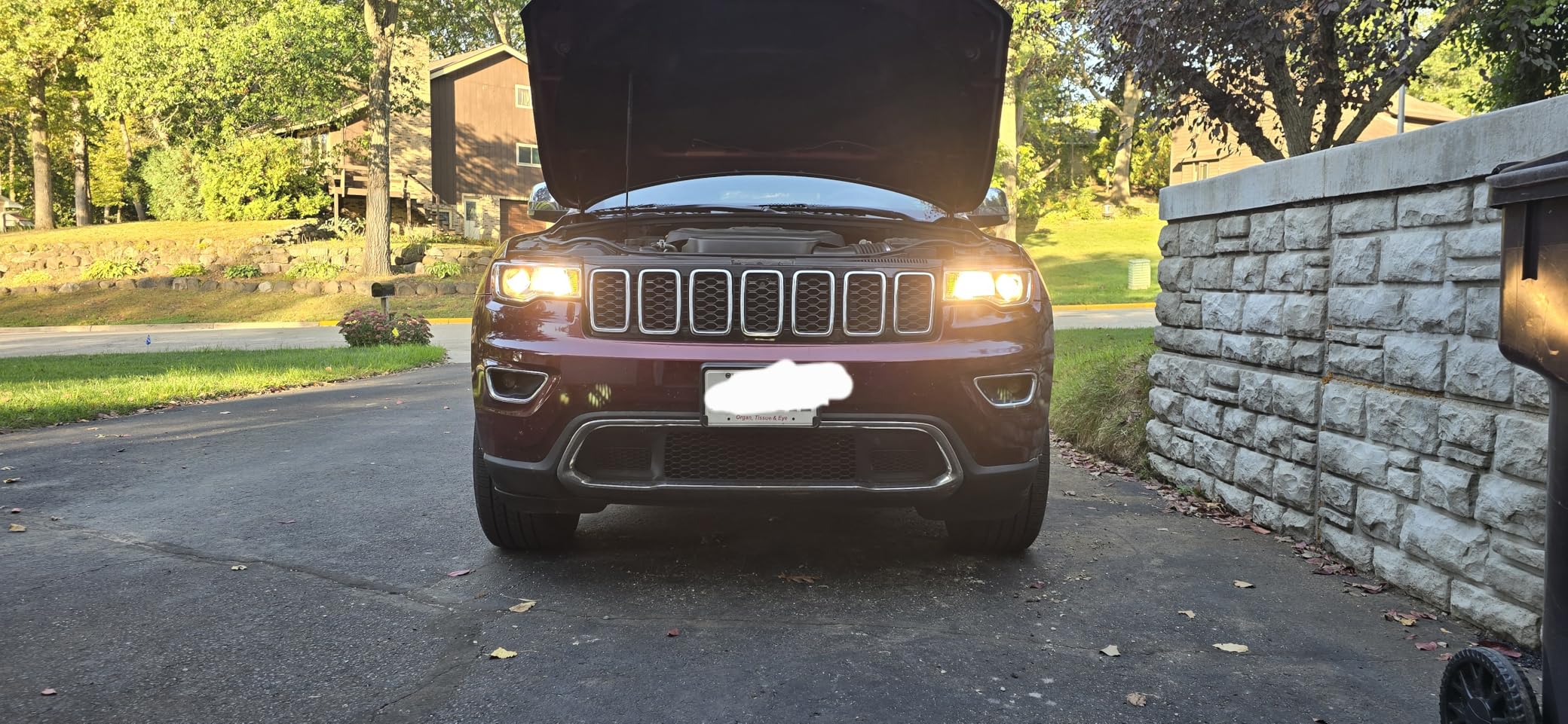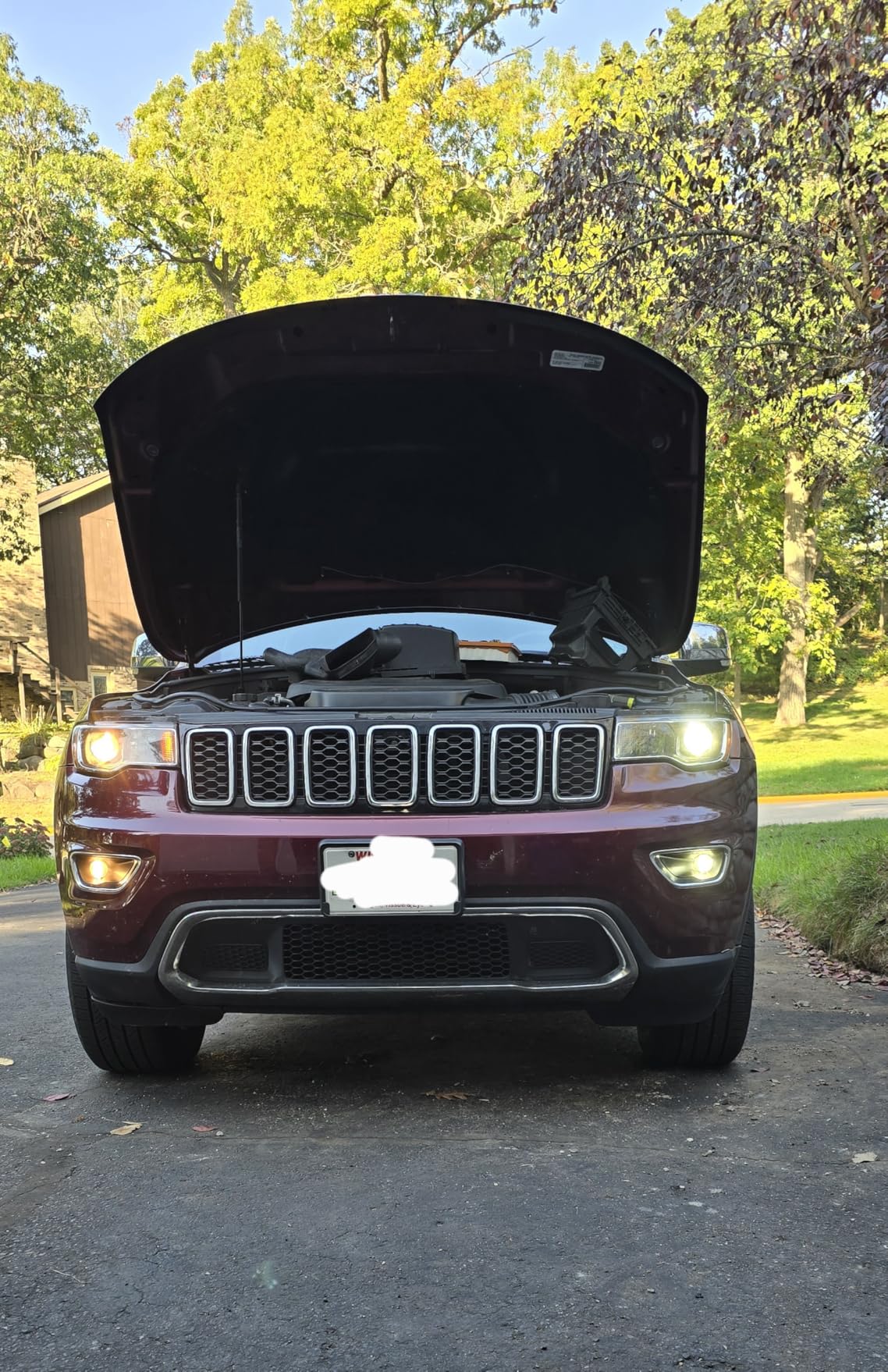Quick Answer
Your headlights should light up the road at least 150-200 feet ahead with low beams and 350-500 feet with high beams. When you're driving 60 mph, you're moving 88 feet every second, so having enough distance to see ahead gives you time to stop or avoid danger. Keep your headlights clean and replace dim bulbs regularly - this simple maintenance can make a huge difference in how far you can see at night.

Introduction
Have you ever been driving at night and wondered if your car headlights are actually bright enough to keep you safe? Most of us just assume our car lights are fine as long as we can see the road ahead, but the real question is how far should your car lights be visible to give you enough reaction time. Your headlights need to illuminate far enough ahead so you can spot obstacles, other vehicles, or road hazards before it's too late to respond safely. Think about it—if you're driving 60 mph and your car light visibility distance is too short, you could be heading straight into danger without even knowing it. Getting your headlight distances right isn't just about passing inspection or avoiding tickets—it's about making sure you, your family, and other drivers can all get home safely every night.
Why Does Car Light Visibility Distance Matter So Much?
Car light visibility distance directly affects your safety when driving at night. The distance your headlights can illuminate determines how much time you have to react when something appears in your path. If your lights don't reach far enough ahead, you won't have enough time to stop or avoid obstacles safely.
The Real Dangers of Dim Car Lights
Poor car light visibility creates several serious safety problems that put you and other drivers at risk:
- Reduced reaction time - When your headlight distances are too short, you only see hazards when you're very close to them. At 60 mph, you're traveling 88 feet per second, so every second of warning time matters for safe stopping.
- Hidden pedestrians and animals - Dim lights make it nearly impossible to spot people walking along the road or animals crossing until you're almost hitting them. This is especially dangerous in rural areas or neighborhoods without streetlights.
- Invisible road debris - Fallen branches, tire pieces, or other objects in the road become visible too late for you to safely avoid them when your car light visibility is poor.
- Other drivers can't see you - When your lights are dim, other vehicles have trouble judging your speed and distance, making merging and intersection situations more dangerous.
How Better Lighting Improves Your Driving
Proper car light visibility distance makes nighttime driving safer and more comfortable in several important ways:
- Earlier hazard detection - Good headlight distances let you see problems on the road while you still have plenty of time to react safely.
- Better lane visibility - Adequate lighting helps you see lane markings, road edges, and curves clearly, making it easier to stay in your lane and take turns safely.
- Improved depth perception - Proper car light visibility helps you judge distances better, making it easier to maintain safe following distances and park accurately.
- Less eye strain and fatigue - When you can see the road clearly, your eyes don't have to work as hard, reducing tiredness during long nighttime drives.

What's the Difference Between Low Beam and High Beam Distances?
Your car has two different headlight settings for good reason - they're designed for completely different driving situations. Low beams and high beams each have their own specific job when it comes to lighting up the road ahead safely. Knowing when and how to use each type properly can make the difference between safe travels and dangerous encounters on dark roads.
Low Beam vs High Beam Comparison
| Feature | Low Beams | High Beams |
| Illumination Distance | 150-200 feet ahead | 350-500 feet ahead |
| Light Pattern | Angled downward and right | Straight ahead, full intensity |
| Best Use | City driving, traffic situations | Rural roads, empty highways |
| Legal Distance from Others | Always safe to use | Must switch off within 500 feet of oncoming traffic |
| Visibility Range | Standard nighttime driving | Maximum road coverage |
| When to Avoid | Never (always appropriate) | Near other vehicles, well-lit areas |
Which Lighting Option Works Better
High beams provide superior car light visibility distance compared to low beams, making them better for spotting distant hazards on empty roads, while low beams are better for everyday driving situations where you need to avoid blinding other drivers. Low beams offer better social driving courtesy and legal compliance in traffic, whereas high beams deliver better headlight distances for rural and highway driving when you're alone on the road. The smart approach is using high beams when you can safely take advantage of their extended range, and switching to low beams whenever other vehicles are around.
When Should You Use Your Car's Fog Lights?
Fog lights are special low-mounted lights designed to help you see better in foggy, misty, or snowy conditions when your regular headlights don't work well. Unlike your standard headlights that shine straight ahead, fog lights are positioned lower on your car and project a wide, flat beam that cuts underneath the fog layer. Many drivers don't realize that using fog lights correctly can dramatically improve their car light visibility distance in poor weather conditions.
Fog lights work differently than your regular headlights, so knowing when and how to use them properly is important for safe driving:
When to Turn On Fog Lights:
- Heavy fog conditions - When visibility drops below 100 feet and your regular headlights create more glare than helpful illumination
- Dense mist or heavy rain - During weather that creates a thick wall of water droplets in the air
- Snow storms - When falling or blowing snow reduces your ability to see the road clearly
- Dust storms - In areas where dust or sand creates visibility problems
How to Use Fog Lights Properly:
- Use with low beams only - Never combine fog lights with high beams, as this creates dangerous glare that actually reduces your car light visibility
- Keep speeds low - Fog lights improve visibility but don't eliminate the need for slower, more cautious driving
- Turn off when conditions clear - Switch fog lights off once visibility improves to avoid blinding other drivers
- Check your manual - Some cars have front fog lights, rear fog lights, or both - know which ones your vehicle has
Important Usage Rules:
- Don't use in clear weather - Fog lights are much brighter than regular lights and can blind other drivers when used unnecessarily
- Rear fog lights need extra care - These are extremely bright and should only be used in the worst visibility conditions
- Legal requirements vary - Some states have specific laws about when you can and cannot use fog lights, so check your local regulations
The key to effective fog light use is remembering they're designed for specific weather conditions, not regular nighttime driving. When used correctly, they can significantly improve your headlight distances in challenging weather.
What Makes Your Car Lights Less Effective?
Several factors can significantly reduce your car light visibility distance, even when you think your headlights are working perfectly. Many drivers don't realize that their headlight distances might be compromised by issues they can easily fix or avoid. Here are the main things that make your car lights less effective at keeping you safe.
Your Bulb Type Limits How Far You Can See
The type of bulbs in your headlights makes a huge difference in how effective your car lights are. Different bulb types provide dramatically different levels of brightness and car light visibility distance:
| Bulb Type | Brightness | Lifespan | Visibility Distance | Cost | Energy Use |
| Halogen | Standard (1,000 lumens) | 1-2 years | 150-200 feet | Lowest | Highest |
| LED | Very Bright (2,000+ lumens) | 10-15 years | 200-300 feet | Medium | Lowest |
| HID/Xenon | Extremely Bright (3,000+ lumens) | 5-10 years | 250-350 feet | Highest | Medium |
Halogen bulbs are the most common and cheapest option but make your car lights much less effective than newer alternatives. LED bulbs make your car lights significantly more effective with much longer life, while HID bulbs provide the most effective illumination but cost more. Upgrading from halogen to LED or HID bulbs can increase your effective seeing distance by 50-100 feet.
Dirty or Damaged Lenses Make Your Lights Weaker
Your headlight lenses can make your car lights much less effective even with good bulbs. Cloudy or yellowed lenses are extremely common on older vehicles and make your car lights 40-60% less effective, dramatically shortening your car light visibility distance. Scratched surfaces make your lights less effective by scattering light instead of focusing it properly, while dirt and grime buildup can make your car lights 20-30% less effective even when they don't look that dirty.
To see if lens problems are making your car lights less effective, stand in front of your car with the lights on. If the lenses look dim, cloudy, or uneven compared to new ones, they're reducing your light effectiveness and need attention.
Poor Alignment Makes Your Lights Point the Wrong Way
Misaligned headlights make your car lights much less effective by pointing light where you don't need it. When headlights aren't aimed properly, they can't provide the car light visibility distance you need because the light goes too high, too low, or off to the sides instead of illuminating the road ahead. Signs that misalignment is making your car lights less effective include one light pointing higher or lower than the other, beam patterns hitting the ground too close to your car, or other drivers frequently flashing their lights at you.
Heavy Loads Change Where Your Lights Point
The weight you carry in your car makes your lights less effective in ways most drivers never consider. Heavy cargo in the back makes your car lights less effective by tipping your car backward and pointing lights upward instead of at the road. Towing a trailer makes your car lights much less effective, especially on hills, while even a full passenger load can reduce your headlight effectiveness by changing the light angle.
Bad Weather Reduces How Well Your Lights Work
Weather conditions can make your car lights much less effective even when they're working perfectly:
| Weather Condition | How Much Less Effective | What to Do |
| Clear Night | No reduction | Use low beams normally |
| Light Rain | 10-20% less effective | Slow down, clean windshield |
| Heavy Rain | 40-60% less effective | Use low beams, slow down a lot |
| Light Fog | 30-50% less effective | Use fog lights if you have them |
| Dense Fog | 70-90% less effective | Use fog lights, drive very slowly |
| Snow/Blizzard | 60-80% less effective | Use low beams, never high beams |
High beams actually make your car lights less effective in fog or snow because they reflect off water droplets and reduce your car light visibility distance. Multiple factors often combine to make your lights less effective - a car with cloudy lenses, misaligned lights, and a heavy load might have half the effective car light visibility distance of a properly maintained vehicle.
What Are the Legal Requirements for Car Headlights?
Car light visibility laws protect everyone on the road, and violations can result in significant consequences. Fines for violating headlight laws range from $50 to $500, with repeat offenders facing vehicle impoundment or license suspension.
Federal standards require headlights to emit white or amber light with brightness between 500-3,000 candelas, but states add specific rules. Most states require headlights from sunset to sunrise and when visibility drops below 500-1000 feet. High beams must be dimmed when within 300-500 feet of oncoming traffic or following within 200-400 feet.
Headlights must typically be visible from at least 1,000 feet ahead. All aftermarket headlights must be DOT or SAE approved, and most states require color temperatures between 2,500K-6,000K . Beyond fines, violating headlight laws can impact accident liability, making compliance essential for both legal and safety reasons.
How Can You Make Your Car Lights Work Better?
Getting better car light visibility doesn't require expensive upgrades - simple maintenance and cleaning can make a huge difference in your headlight distances. These practical steps can improve your nighttime driving safety without breaking the bank.
Monthly Maintenance Checks
Check your headlights monthly by turning them on and walking around your car. Look for dim or flickering bulbs and uneven light patterns. Test both low and high beams since one can fail while the other works.
Check your light aim by parking 10 feet from a wall with lights on - both beams should hit at the same height. Replace bulbs in pairs even if only one burns out, and keep spare bulbs in your car for emergencies.
How to Clean Your Headlights
Clean headlights can improve your car light visibility by 30% or more. Start with soap and water to remove dirt and grime that blocks light output. For cloudy or yellow lenses, use a headlight restoration kit from any auto parts store.
Clean your headlights every time you wash your car, and always before long nighttime trips. Also clean the inside of your windshield since dirty glass scatters light and reduces visibility.
Should You Upgrade Your Bulbs?
LED bulbs are the best upgrade option - they're brighter than halogen bulbs, last 10-15 years, and use less energy. Always choose DOT-approved bulbs that fit your car's specifications.
Avoid cheap online bulbs that claim extreme brightness - they often create dangerous glare. Look for bulbs with color temperatures between 3,000K-4,000K for the best visibility. Remember to fix cloudy lenses and alignment issues before upgrading bulbs for maximum improvement in your headlight distances.

What Happens When Your Car Headlights Are Faulty?
Misaligned or faulty headlights create serious safety hazards that put you and other drivers at risk every time you drive at night. When your headlights don't aim properly or aren't working correctly, they can't provide the car light visibility distance you need to drive safely.
4 Problems with Misaligned Headlights:
- Lights pointing too high - Blind oncoming drivers while failing to illuminate the road directly in front of your vehicle, reducing your effective headlight distances to just a few feet.
- Lights pointing too low - Severely limit how far ahead you can see, giving you almost no time to react to obstacles, pedestrians, or road hazards.
- Uneven light patterns - Create blind spots and inconsistent illumination that make it difficult to judge distances and see lane markings clearly.
- Off-center aiming - Point light away from your intended path, leaving large areas of the road completely dark.
4 Dangers of Faulty or Broken Lights:
- Dim or dying bulbs - Reduce your car light visibility distance by 50% or more, making it nearly impossible to spot hazards until you're dangerously close.
- Flickering headlights - Create distracting light patterns that strain your eyes and make it difficult to focus on the road ahead.
- One burned-out headlight - Cuts your illumination in half and makes it harder for other drivers to judge your speed and distance, especially dangerous at intersections.
- Cloudy or damaged lenses - Block light output and scatter the beam, reducing effective headlight distances even with good bulbs.
4 Immediate Safety Risks:
- Reduced reaction time - Poor car light visibility means you see problems too late to stop or avoid them safely.
- Endangering other drivers - Misaligned lights can temporarily blind oncoming traffic, causing them to swerve or brake suddenly.
- Increased accident risk - Other drivers can't accurately judge your position or speed when your lights are uneven or too dim.
- Legal liability - If faulty lights contribute to an accident, you may be held responsible for damages and injuries.
If you notice any of these problems with your car headlights, get them fixed right away. The few dollars you spend on repairs could prevent a serious accident that costs much more.
Check Your Car Light Visibility Distance Today
Getting your headlights right isn't complicated, but it can save your life. Whether your low beams need to reach 200 feet or your high beams should illuminate 500 feet ahead, proper car light visibility distance gives you time to react when something unexpected happens. Clean lenses, good bulbs, and properly aimed lights make all the difference between seeing clearly and driving blind. Don't wait until you're squinting down a dark highway or dealing with a ticket - spend ten minutes this weekend checking your headlights, cleaning them off, and making sure they're working properly. Good headlight distances aren't just about following the law, they're about getting home safely every night.
Frequently Asked Questions About Car Light Visibility
Q1: How can I tell if my headlights are aimed correctly without going to a mechanic?
A: Park 25 feet from a flat wall or garage door on level ground with your car loaded normally. Turn on your low beams - the brightest part of each beam should hit the wall at the same height and be slightly below your headlight centers. If one side is noticeably higher or lower than the other, your lights need adjustment.
Q2: What's the average cost to fix headlight visibility problems?
A: Basic bulb replacement costs $20-50 for both bulbs if you do it yourself, or $50-100 at a shop. Headlight restoration for cloudy lenses runs $75-150 professionally, or $15-25 for a DIY kit. Professional headlight alignment typically costs $50-75, while lens replacement can range from $200-600 depending on your vehicle.
Q3: Do SUVs and trucks have different visibility requirements than regular cars?
A: Legally, the distance requirements are the same, but larger vehicles sit higher and their headlights are mounted higher off the ground. This can create more glare for other drivers if not properly adjusted. Many trucks and SUVs also carry varying loads that can change how the lights aim, so they need more frequent alignment checks.
Q4: How often should I replace my headlight bulbs even if they're still working?
A: Replace halogen bulbs every 2-3 years, as they gradually dim over time even before burning out completely. LED and HID bulbs can last 10+ years but should be checked annually for dimming. If your headlights look noticeably dimmer than when new, replace them regardless of age.
Q5: Can I get pulled over just for having one headlight out during the day?
A: Yes, in most states you can receive a ticket for driving with one headlight out even during daylight hours. Many states require all vehicle lighting equipment to be functional at all times. The fine is usually the same whether it's day or night.
Q6: Will my car insurance cover accidents caused by poor headlight visibility?
A: Your insurance will typically cover accidents regardless of headlight condition, but if police determine that faulty or non-compliant headlights contributed to the accident, your rates may increase significantly. In severe cases, your coverage could be reduced if negligent maintenance is proven.
Q7: What should I do if my headlights keep getting cloudy or yellow after cleaning?
A: This usually means the protective coating on your headlight lenses has completely worn away. DIY restoration is only temporary in these cases. You'll need either professional restoration with UV-protective coating application, or complete lens replacement to permanently solve the problem.
Q8: Are there any headlight problems I should never try to fix myself?
A: Avoid DIY electrical work if you're not experienced - faulty wiring can cause fires or damage expensive computer systems in modern cars. Also, don't attempt to adjust headlights if your car has been in an accident, as frame damage might require professional alignment equipment to fix properly.
